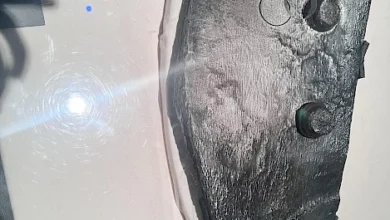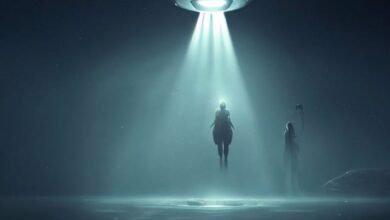When a Significant Figure in the U.S. Government Dies in Disturbing and Suspicious Circumstances

Mind-control doesn’t have to be the work of subliminal phenomena, drugs, psychedelics, and hypnotic devices. Rather, it works very well when the targeted person is pummeled over and over again, and with nothing but words. That’s to say, someone who is skilled in breaking minds – over and over again – can mold a mind in an incredibly quick time. Such a thing happened in the latter days of the 1940s. And, the poor target was no less than one of the most powerful figures in the heart of the U.S. Government. The man in question was crushed, and crushed again, and all by the power of the mind. And, to the point he didn’t live long. May 22, 1949 was the date on which the first U.S. Secretary of Defense, James Forrestal, died. Specifically at 1:50 a.m. As will quickly become apparent, the circumstances surrounding Forrestal’s final hours are swamped in controversy. All that we know with absolute certainty is that in the early hours of the 22nd, Forrestal’s body was found on a third-floor canopy of the Bethesda Naval Hospital, Maryland. Did he take a fatal leap out of the window of the 13th floor of the hospital, his mind in turmoil and suicide on his mind? Was it an accident? Or, was Forrestal assassinated? Let’s have a look at this undeniably strange and disturbing affair.
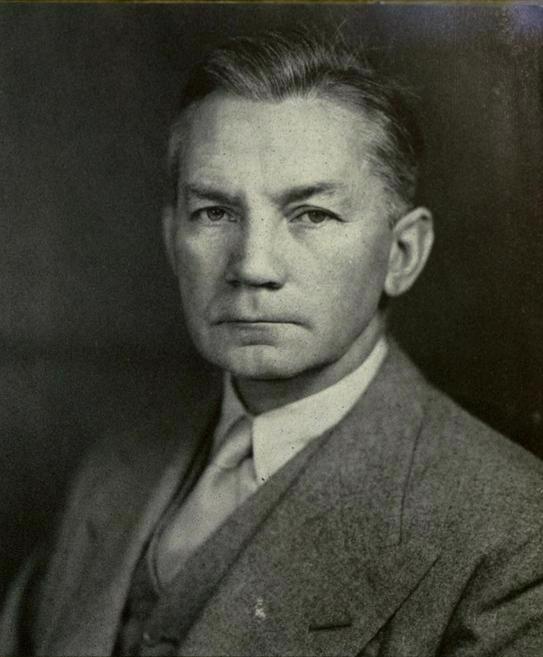
We’ll begin with a bit of important background on the man himself. Forrestal was born just eight years before the dawning of the 20th century, in Dutchess County, New York and, after completing his education at Princeton University, took a job with a Wall Street-based company, William A. Read and Co. A skilled figure in the field of economics, Forrestal quickly made for himself a significant amount of money. At the age of thirty-four he got married, to a journalist with Vogue named Josephine Ogden. It was hardly the ideal situation, though. Ogden was an alcoholic and someone who flew off the handle at just about any given moment possible. Forrestal had his flaws too: he was a very unemotional person. For Forrestal, getting close to people was incredibly difficult. To the point where, eventually, he pretty much gave up trying. In 1940, however, things changed for Forrestal; massively so.
It was in that year that Forrestal decided to take his career in a very different direction: with the U.S. government. Amazingly, it wasn’t too long before he was offered the prestigious position of Under-Secretary of the Navy. Hardly surprisingly, Forrestal quickly accepted the prestigious position. From there, things really took off: he was soon given the job of Secretary of the Navy. Things were taken to an even greater scale when, in 1947 – the year in which the National Security Act was passed and the CIA was created – Forrestal was approached by the presidential office no less, to take on the role of Secretary of Defense; in fact, the very first U.S. Secretary of Defense ever. President Harry S. Truman was more than happy with his choice for the position. Matters soon began to change, however, and not at all in a good way – to say the very least.
It wasn’t long before Forrestal began to exhibit psychological problems. Depression, caused by his huge workloads, were said to have been the primary cause. Matters only got worse: the depression deepened, anxiety attacks kicked in, and a notable dose of paranoia overwhelmed him. For the U.S. government, as the Secretary of Defense Forrestal was a major asset to the infrastructure of the United States, this was not good at all. His psychological issues, however, had him secretly marked by President Truman as a potential danger to the orderly running of the Department of Defense. Bit by bit, and throughout 1948, Forrestal’s fraught state of mind got even worse. Eventually, action had to be taken. And, it most certainly was. Forrestal lost his job as the Secretary of Defense. The next thing for the government was to try and help Forrestal get well. Of course, no-one wanted the man to suffer or plunge into a state of life-threatening proportions. So, a decision was taken to have Forrestal admitted to the aforementioned Bethesda Naval Hospital, where, hopefully, he could recover. Most worrying for Truman’s team, however, was the genuine fear that a destabilized Forrestal just might go off the rails and spill the beans on some of the U.S. government’s most guarded secrets. It was a dangerous and unpredictable time. It would soon turn deadly.
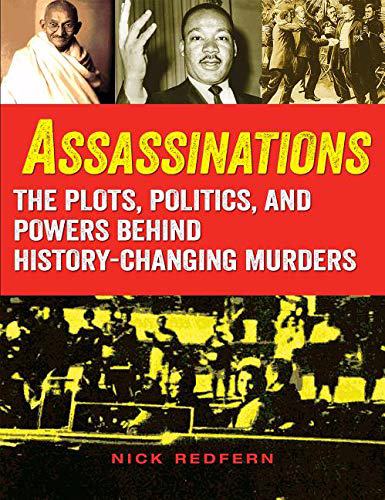
Just a few days before he ended up in the naval hospital, Forrestal had a curious experience that had distinct Men in Black overtones attached to it. On the day in question, Forrestal received a visit from one of his friends, a man named Ferdinand Eberstadt, someone who was deeply concerned about Forrestal’s fragile and paranoid state of mind. Eberstadt (a lawyer, a banker, and the author of a historic 1945 document, “Task Force Report on National Security Organization”) was floored by what he saw when he arrived at Forrestal’s home. All of the curtains were closed. Forrestal told his friend – in hushed tones – that listening-devices were all over the house. Sinister characters were watching his every move. His life was in danger. To demonstrate this to Eberstadt, Forrestal carefully opened one of the blinds and pointed, knowingly, in the direction of a pair of shabbily-dressed men on the street-corner. “They” were a part of it, Forrestal assured Eberstadt. In no time at all, the doorbell to Forrestal’s home was heard ringing. The last thing Forrestal wanted to do was answer the door. Fortunately, one of his staff was on hand to do exactly that. A brief conversation took place, but which neither Forrestal nor Eberstadt were able to hear. The facts, however, quickly came to Forrestal from his houseboy.
According to what the two men were told, the visitor at the door was trying to generate support that would hopefully allow him to become postmaster in his hometown. Could he come in and speak with Forrestal and have him offer some help and advice? Due to Forrestal’s chaotic mindset, the man was quickly sent packing. Eberstadt and Forrestal watched carefully as the man walked directly towards the two badly-dressed men that already had Forrestal in a state of turmoil. It was even more evidence of a conspiracy against him, Forrestal grimly concluded, when he saw the three clearly engaging in conversation. Maybe the whole thing was blown out of proportion by a man descending into a collective state of paranoia, fear, and nervous collapse. Certainly, that’s what happened. But, it’s worth noting that this odd affair, which occurred during Eberstadt’s visit, has several Men in Back-themed parallels to it. First, the Men in Black are typically described as looking not quite right: they are extremely pale-skinned, they often have bulging eyes (hidden behind wraparound shades), and (very bizarrely) are at times described as wearing wigs and make-up. The inference is that they are not human. Forrestal’s visitor on the day in question was described by his staff as very odd-looking.
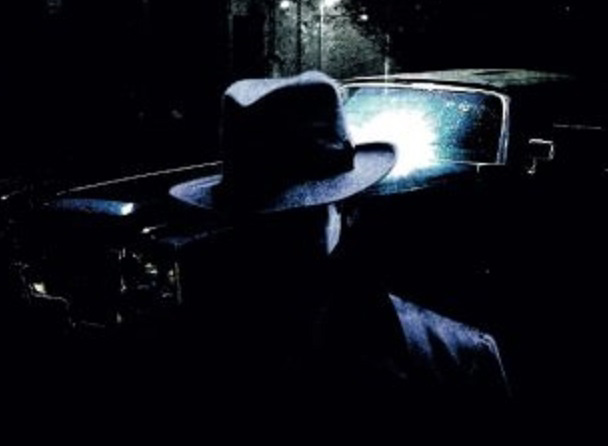
(Nick Redfern) Forrestal and the M.I.B.: a strange connection.
That the man tried to gain access to Forrestal’s home – by claiming to be seeking support for a potential job as a postmaster – mirrors the 1960s-era reports of MIB finding ways into the homes of UFO witnesses by claiming to be military personnel or police officers. In the same time-frame, Women in Black were posing as census-takers and as gypsies. They were clearly neither. The MIB are often described as wearing clothes that are shabby, dirty, and which occasionally give off an odor like dirt. The two characters that the “odd-looking” man walked towards (and began speaking to) were badly dressed. And, there’s the fact that the men amounted to a trio. Particularly in the 1950s and the 1960s, the MIB turned up in threes at the homes of witnesses to UFOs. It must be stressed that none of this proves James Forrestal was murdered. It must be said, however, that the day in question was a very weird one. And not just for Forrestal, but also for Eberstadt. Even he had to admit it was all a bit odd. And, it’s worth noting the words of Dennis Stacy – a long-time and well-respected figure in Ufology, and who runs Anomalist Books with Patrick Huyghe. Of that MIB-like affair, Stacy observed in a 1993 article for Flying Saucer Review magazine titled “Forrestal’s Fall: Did He Jump, or Was He Pushed?” that “…the whole thing has the appearance of a one-act play staged for Forrestal’s ‘benefit.’”
Notably, Stacy added that the affair “begins to smack of orchestration aimed at unsettling an already unstable Forrestal.” Thought-provoking words, indeed. April 2, 1949 was the date on which Forrestal was taken to the hospital – for his own good and for that of the U.S. government, too. It was apparent to the doctors and nurses that Forrestal was in a dangerous state. Forrestal suspected – in fact, he was absolutely sure – that dangerous characters were watching his every move. Who those same characters might have been all very much depended on Forrestal’s frame: sometimes it was Russian agents. On other occasions it was spies in the U.S. government. As for the latter, Forrestal thought it was J. Edgar Hoover’s FBI. Forrestal’s mind was spinning – and far from in a good way. On top of that, Forrestal stopped eating for a while. Not a good sign. It’s important to note that when Forrestal was admitted to Bethesda he was in what amounted to solitary confinement, and the windows of the room were modified so they couldn’t be opened. Notably, when Forrestal’s family inquired why such actions had been taken, Captain George N. Raines, the chief psychiatrist at Bethesda, said it was to prevent Forrestal from leaping out of the windows and killing himself – which, some believe, is exactly what happened on the fateful night that Forrestal’s life met its end.
After a few weeks in the hospital, there was a clear, welcome, improvement for Forrestal. Both the doctors and the nurses concurred. On top of that, his appetite started to return. To the point where – in the presence of Rear Admiral Morton Willcutts, who had come to see his old friend – Forrestal chowed down on a huge steak. It really did appear that good times were ahead. That all changed, however, only two days later. Or, rather, two nights later. Death was just around the corner. It was a death shrouded in mystery. Let’s see what we know for sure about those final hours for someone who held some of the U.S. government’s most important secrets. The man assigned to keep a careful watch on Forrestal was Edward Prise. He was a U.S. Navy corpsman. Such was the length of their time spent together, the pair became good friends. As the night got longer, Forrestal told Prise that he didn’t need a sleeping pill and was going to dig into a book for a while. That too was a good thing. Or, at least, it seemed to be that way. After Prise’s shift was over, he was replaced by another military man, Robert Wayne Harrison, Jr. Forrestal’s end was almost upon him.
At some point into his shift, Harrison, Jr. left the room to run an errand. From that point onward, everything very much becomes murky, unclear – and probably something that will never be fully resolved to the satisfaction of everyone. When Harrison, Jr. got back to the room he was shocked to the core to see that Forrestal was not in his bed. And, the room’s windows were open. Harrison’s Jr raced to the window: the cord of Forrestal’s dressing-gown was tied to the radiator near the window. Clearly, the goal was death by strangulation. It turned out, however, that Forrestal’s weight caused the cord to snap and Forrestal fell ten floors to his death; something that absolutely no-one could have had a chance of surviving. The official theory is that Forrestal – left all alone in his room – took his own life, possibly in a brief moment when his mind swung back to that dangerous state of depression and anxiety. The big question, however, is: could Forrestal have been pushed? The reason: to make sure he could never, ever reveal what he may have been exposed to in government.
It should also be stressed that at the time of his death Forrestal was in one of his best states of mind of the last few months. Moreover, Edward Prise revealed that Forrestal had told him he would like Prise to take on the job of his, Forrestal’s, personal driver. In other words, Forrestal seemed to be making plans for a good future – and not for the end of his life. Then, there’s the matter of Forrestal’s brother, Henry. On the day of Forrestal’s death, Henry marched into the hospital, demanding that Forrestal be released into his, Henry’s, care. If someone on “the inside” wanted Forrestal dead, then allowing Henry Forrestal to take his brother home would have been disastrous. Forrestal would have been totally out of the control of those who may have wanted him dead; something powerful players may not have wanted. It is, then, rather telling that Forrestal died the night before Henry was due to take his brother back to his house. That’s not all, though: there’s also the matter of why, precisely, Robert Wayne Harrison, Jr., left the room. That was completely against the grain: official orders were that Forrestal was never, ever to be left alone. And, yet, on the very night that Forrestal died, he was left alone. Henry Forrestal was deeply concerned about the circumstances surrounding his brother’s death, to the point that he came to believe that his brother had indeed been murdered. But, why, exactly, would someone want Forrestal gone? We now come to the most controversial theory of all. It all revolves around timing.
It was on April 26, 1947 that the U.S. government unveiled the National Security Act. June 24, 1947 was the date on which Kenneth Arnold encountered a squadron of flying saucers over Mt. Rainier, Washington State – thus ushering in the beginning of the UFO phenomenon. Just about a week later, the still-controversial Roswell, New Mexico “UFO crash” occurred. And, on September 17, 1947, President Truman insisted that Forrestal be sworn in as the first Secretary of Defense – as in immediately, and not under the regular, much slower, process of placing someone into the presidential infrastructure. One day later, the 18th, the CIA was created; the CIA having played a significant role in the history of U.S. government UFO investigations. It’s hardly surprising that within the UFO research community there are a significant number of investigators who believe that Forrestal was wiped out to prevent him – in his fraught state – from spilling the beans on what he knew about UFOs and Roswell. If this all sounds like a plot from The X-Files, it’s significant to note that something else occurred on September 19, 1947. On the same day that Forrestal took his role as Secretary of Defense, a highly classified U.S. military document was prepared. Its title was: “AMC [Air Materiel Command] Opinion Concerning ‘Flying Discs.’” The document was written by General Nathan Twining. In the document, Twining wrote: “The phenomenon reported is something real and not visionary of fictitious…There are objects probably approximating the shape of a disc, of such appreciable size as to appear to be as large as man-made aircraft.” One day later, Forrestal, Truman, and Dr. Vannevar Bush got together.
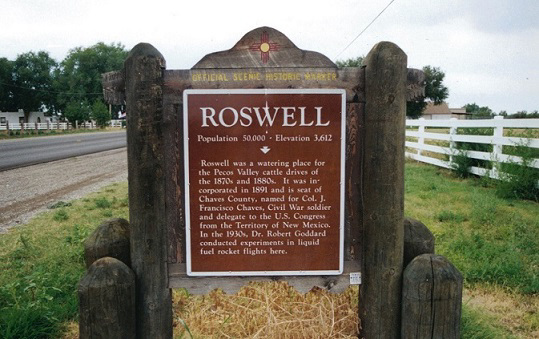
Did someone in the U.S. government want James Forrestal gone? As in forever? And all as a result of fears that Forrestal might have been on the verge of revealing to the public, and to the media, what Forrestal had learned about UFOs? The full answers elude us. The significant time-frame – which ties UFOs with the creation of the CIA and of the National Security Act, too – suggests that, incredibly, Forrestal really was callously thrown out of that 13th floor window at the Bethesda Naval Hospital. And, just maybe, the reason revolved around the sudden and growing presence of extraterrestrials in our world. Whatever the answer, someone crushed Forrestal’s mind. And it was all done in a lethal, cold-hearted fashion. The government was learning how amazingly easy – and quickly – it was to alter minds and even, perhaps, provoked people to jumping out of windows and to their deaths.

